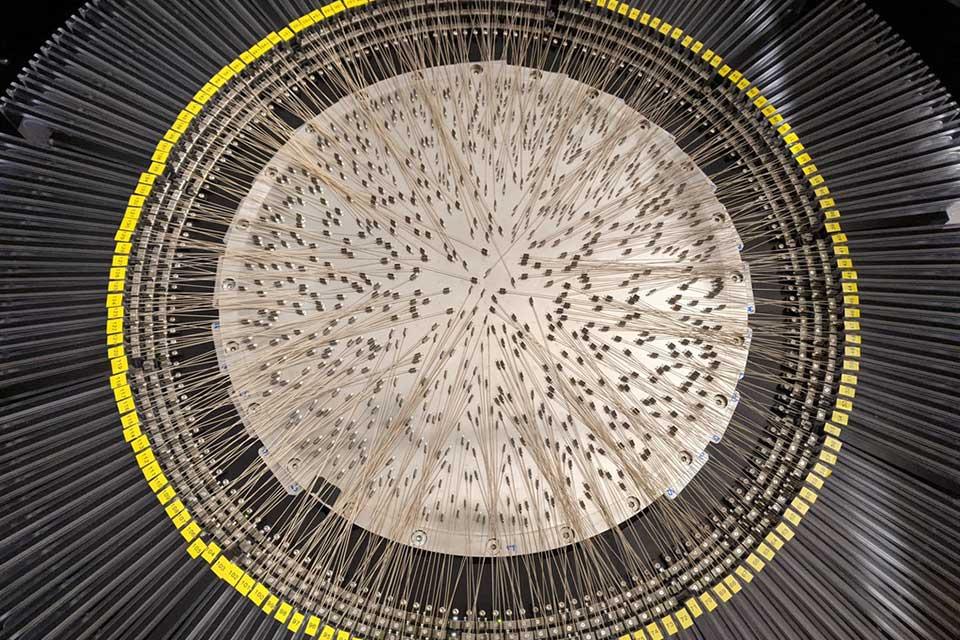After ten years of planning, design and construction, final preparations are underway for a brand new all-seeing instrument to be switched on at the William Herschel Telescope: a pioneering eye on the sky for the Northern Hemisphere.
The WHT sits high in the mountains at the Roque de los Muchachos Observatory on La Palma, one of the Canary Islands; this latest addition, the WHT Enhanced Area Velocity Explorer (WEAVE) is about to be set to work measuring the velocities of more than 5 million stars in our galaxies.
WEAVE will extend the telescope’s field of view to two degrees on the sky, and deploys optical fibres in order to increase the rate of measurements to up to 1,000 stars per hour; it will enable scientists to study everything from white dwarfs in the neighbourhood of the Sun to the formation and evolution of distant galaxies.
Precision engineering
The project is led by Professor Gavin Dalton from Oxford’s Department of Physics and the Science and Technology Facilities Council’s (STFC) RAL Space. The Department of Physics’ specialist workshops at Oxford produced some of the critical components for the new instrument including the all-important fibre positioner. It comprises two plates, just 40cm diameter that took over a year to make and some 950 fibres, each no more than a hair’s breadth encapsulated in half-millimetre casing. A triumvirate of robots is tasked with manoeuvring the fibres, two working at moving one fibre every 3 seconds while a third is used to cross-check the alignment of the fibres with the on-sky targets.
The fibre positioner component measures two metres cubed and is the result of years of precision engineering and painstaking attention to detail: workshops at the Department of Physics fabricated some 50,000 pieces for the project. The end result is extraordinary – a web of fine fibres sheds new light on the project’s acronym name and the robots appear to dance so intricate is the precision programming.
Installation – a gargantuan task
Over the last year or so, components from around the world, including the Oxford-built fibre positioner, have all made their way to La Palma and up to the Roque de los Muchachos Observatory for installation and calibration – a gargantuan task in itself, even without a global pandemic. The observatory sits at 2,400m above sea level on the edge of a crater that is a mile and half deep and is accessible via a purpose-built road that climbs steeply over mile upon mile of switchbacks.
Professor Dalton has seen the project through from its origins, when he presented the concept to the a meeting at the Royal Astronomical Society in 2010, to its near completion now. ‘Undertaking these final preparations during an international lockdown certainly added an extra layer of challenge to what was already a very complex project,’ he observes, ‘and it is tremendous to see the sustained efforts of so many groups of people finally coming together at the telescope – and to finally be able to bring the positioner system to operation. WEAVE has been 10 years in development with many complex moving parts and components developed in laboratories across Europe. With everything now at the Roque de los Muchachos Observatory we are on the cusp of offering astronomers a new and improved eye on the stars.’

